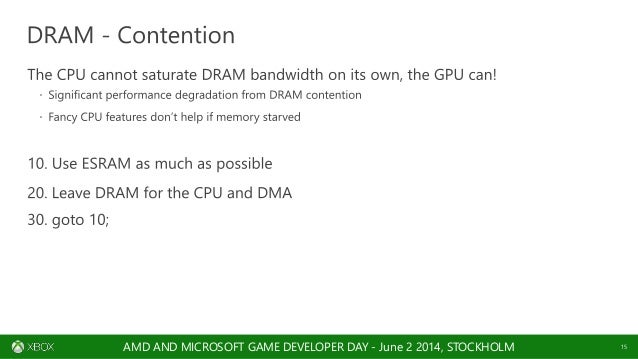XB1 launched with DX11, it should use less power with DX12.
http://blogs.msdn.com/b/directx/arc...-high-performance-and-high-power-savings.aspx
It's risky to extrapolate from a platform whose TDP is close to 1/10 that of a console. The load performance scenario is likely only a few watts away from what the console APU idles at.
The software test is designed to show how the system operates in a tightly power-constrained environment on a synthetic workload designed to make the trade-off obvious.


